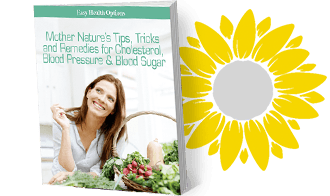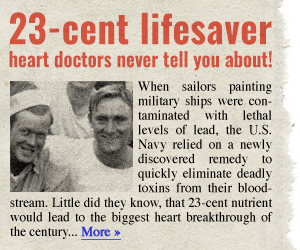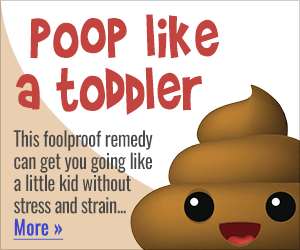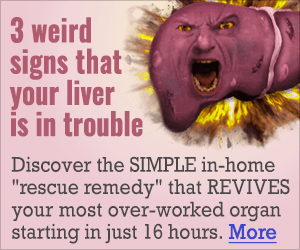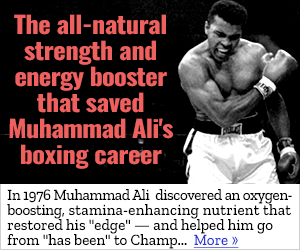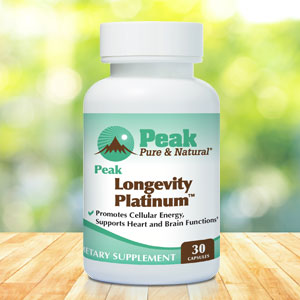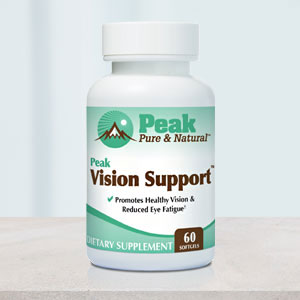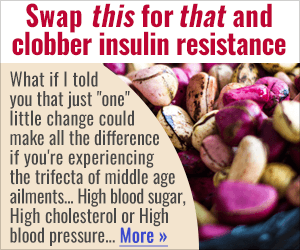Get Easy Health Digest™ in your inbox and don’t miss a thing when you subscribe today. Plus, get the free bonus report, Mother Nature’s Tips, Tricks and Remedies for Cholesterol, Blood Pressure & Blood Sugar as my way of saying welcome to the community!
Why antioxidants are the answer for aging brains and muscles

If you’re an older adult who sometimes struggles to open a jar or finds it difficult to climb stairs, you may be in the early stages of sarcopenia. This age-related disease causes a progressive loss of muscle strength in older individuals, resulting in a decline in mobility.
Sarcopenia can also raise the risk of developing cognitive disorders. One study found people with sarcopenia were six times more likely to have cognitive impairments than those without the disease.
We know that exercise can help protect against age-related muscle loss and boost our cognitive health. But what about the role that nutrition plays?
The power of blended antioxidants
Oxidative stress, which plays a significant role in age-related health issues, is the progressive cellular damage caused by free radicals.
The best defense against oxidative stress? Antioxidants. Consuming foods rich in antioxidants can reduce cell damage and slow down age-related health decline.
In a recent study, researchers gave aged mice a blended antioxidant supplement known as Twendee X (TwX). The supplement contains the following antioxidants:
- Vitamin C
- L-glutamine
- Niacin
- L-cysteine
- Coenzyme Q10 (CoQ10)
- Vitamin B2
Results showed the mice experienced significant improvements in spatial cognition, short-term memory and muscle durability.
These results suggest that such antioxidant cocktails may benefit both memory and muscle strength in aging humans.
The right foods for antioxidants
Many foods are rich in antioxidants, but unfortunately, most of the foods highest in antioxidants are those that most of us don’t eat enough of.
If you’re ready to make an effort to improve your dietary antioxidant intake, look for these:
- Glutamine/l-glutamine: Beef, cabbage, cottage cheese, milk, pork, poultry, raw parsley, raw spinach, ricotta cheese and yogurt
- Niacin (B3): Bananas, beef, beef liver, brown rice, fish, fortified cereals and breads, legumes, nuts, pork, poultry and seeds
- Cysteine/L-cysteine: Beef, egg, poultry and whole grains
- CoQ10: oily fish (such as salmon and tuna), organ meats (such as liver) and whole grains
- Vitamin B2/riboflavin: Almonds, cheese, chicken breast, dairy milk, fortified cereals and breads, eggs, lean beef and pork, organ meats (such as beef liver), salmon, spinach and yogurt
- Vitamin C: bell peppers (all colors), broccoli, Brussels sprouts, cantaloupes, cauliflower, grapefruits, leafy greens (turnip, mustard, beet, collards), honeydew melons, kale, kiwi, lemons, oranges, papayas, snow peas, strawberries, sweet potatoes and tomatoes
- Vitamin E: Almonds, avocado, leafy greens (beet, mustard, turnip), peanuts, red peppers, spinach (boiled), Swiss chard and sunflower seeds
- Carotenoids (including lutein and zeaxanthin): Apricots, asparagus, beets, broccoli, cantaloupes, carrots, bell peppers, kale, mangos, oranges, peaches, pink grapefruits, pumpkins, winter squash, spinach, sweet potatoes, tangerines, tomatoes, turnip and collard greens and watermelon
- Selenium: Barley, brown rice, Brazil nuts, fish, shellfish, beef and poultry
- Zinc: Beef, cashews, chickpeas, fortified cereals, lentils, oysters, poultry, pumpkin seeds, sesame seeds and shrimp
- Phenolic compounds: Anthocyanins (blueberries, strawberries), catechins (berries, cocoa, tea), coumaric acid (berries, spices), quercetin (apples, onions, red wine), resveratrol (grapes, peanuts, and red wine)
Editor’s note: What do you really know about stroke? The truth is, only 10% of stroke survivors recover almost completely, and all doctors can offer is what to do after a stroke occurs. That’s unacceptable considering 80% of strokes are preventable! Click here to discover how to escape The Stroke Syndrome: 5 Signs it’s Stalking You — Plus the Hidden Causes and Preventive Measures You’ve Never Heard About!
Sources:
Blended antioxidant supplement improves cognition and memory in aged mice — ScienceDaily
A Blended Vitamin Supplement Improves Spatial Cognitive and Short-Term Memory in Aged Mice — International Journal of Molecular Sciences
Antioxidants — Harvard T.H. Chan School of Public Health
Glutamine — Mount Sinai
Niacin – Vitamin B3 — Harvard T.H. Chan School of Public Health
Dietary Cysteine and Other Amino Acids and Stroke Incidence in Women — Stroke
Coenzyme Q10: The essential nutrient — Journal of Pharmacy & BioAllied Sciences
Riboflavin – Vitamin B2 — Harvard T.H. Chan School of Public Health
